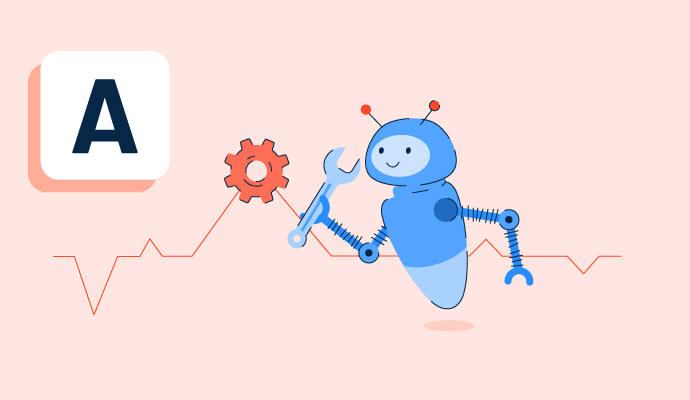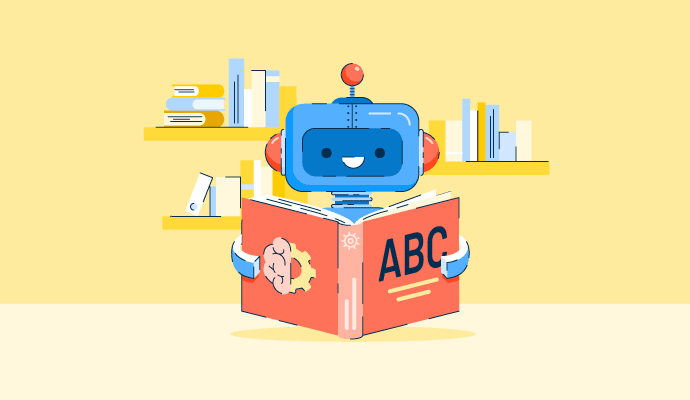What is AIOps?
Artificial intelligence for IT operations (AIOps) harnesses AI tools like machine learning (ML) and natural language processing (NLP), to improve tech workflow.
AIOps gathers data from IT components, applications, monitoring tools, and service systems, and filters necessary signals from unnecessary noise. This helps spot key events and trends that affect application performance. Moreover, it identifies the root causes of any error and shares them with IT and DevOps teams. Sometimes, AIOps tools can even fix the problems without human help.
Modern IT networks are vast and complex, but AIOps makes it easy for IT teams to tackle issues before they become big problems. Combining multiple IT tools into one intelligent platform, AIOps empowers organizations to manage such complexity and make their IT departments smarter, faster, and more efficient.
AIOps benefits
AIOps swiftly addresses issues and errors instead of sifting through alerts from several tools. It transforms the manual approach into an automated process, facilitating quick resolutions of outages or slow-downs. AIOps also:
- Reduces operational costs. Addressing operational issues decreases operating costs. It leads to better resource use and allows staff to work on critical projects without worry about encountering roadblocks.
- Enhances collaboration. Integrations within AIOps tools foster better collaboration across teams like DevOps and ITOps. Better decision-making and quicker issue response are its key outcomes.
- Helps avoid more significant issues. AIOps has predictive analytics that highlights pressing alerts. IT teams handle potential problems before they cause harm.
- Boosts key performance indicators (KPIs). AIOps improves cloud and on-premises IT performance, positively influencing key performance indicators.
- Analyzes data. Merging previously isolated data sources enables comprehensive analysis, offering more profound insights.
- Improves job satisfaction. Automating tedious tasks lets IT teams focus on valuable analysis and optimization, improving their job satisfaction.
- Maximizes data value. AIOps merges automation with big data, revealing crucial connections and relationships with actionable insights.
AIOps stages
AIOps uses a big data platform to gather IT operations data from multiple sources. This data includes historical event and performance data, system logs, packet data, incident and ticketing-related data, and infrastructure information. Next, ML capabilities help identify and fix issues.
A typical AIOps workflow includes these stages:
- Data selection. AIOps sifts through vast IT data to pinpoint essential elements. It looks for necessary “needles” in massive data “haystacks” using set selection and prioritization measures.
- Pattern discovery. This phase examines the chosen data to find links between data elements. AIOps groups these elements for further analysis.
- Inference. After detailed analysis, AIOps identifies the leading causes of problems and trends. It provides clear insights to guide actions.
- Collaboration. AIOps alerts the right teams and gives them the necessary information to act. It ensures effective teamwork, even if team members are far apart.
- Automation. AIOps can automatically address and fix issues, boosting the speed and accuracy of IT operations.
- Continuous learning. Over time, it learns from data and gets even better at managing its job.
Key features of an AIOps platform
Every organization follows a different approach to implementing AIOps. The important thing is to decide on a suitable platform and ensure it has the following features for effective implementation.
- Observability watches over software and hardware performance. It offers a complete view of apps and systems, but relies on IT teams to fix any issues they spot.
- Predictive analytics studies data to offer valuable insights. AIOps can point out problems and suggest solutions. This cuts down on outages and reduces costs.
- Proactive response. Some AIOps tools can act even before a problem happens because they see patterns and tackle issues early.
AIOps use cases
Several benefits of the AIOps platform make it suitable for many use cases. Below are a few notable ones.
- Big data management. AIOps handles vast amounts of data to improve IT operations. It aggregates data into one intelligent system and makes sense of it.
- Performance analysis. AIOps tools use AI to analyze large data sets, quickly identifying a problem’s root cause.
- Anomaly detection. AIOps watches significant deviations from normal behaviors by identifying unusual data patterns and outliers.
- Event correlation. Tools with AIOps capabilities group similar events together automatically and reduce unnecessary event traffic and noise.
- Automation. AIOps handles and monitors servers, container data, storage systems, and cloud. The tool catches issues and automatically addresses them.
AIOps industry-wise application
AIOps uses advanced methods to tackle tech challenges, pinpointing the core reasons for issues and addressing them. AIOps platforms can preemptively detect potential crises and provide insights into app performance. With such capabilities, IT teams in the following industries use AIOps.
- Healthcare. AIOps helps protect personal health data by following rules like the Health Insurance Portability and Accountability Act (HIPAA). It makes mobile devices safer for healthcare workers and prevents ransomware attacks.
- Manufacturing. Machines get fixed before they break, thanks to AIOps. It gathers and studies supply chains, factory operations, and product life cycle data. The platform watches every machine in real time, collecting data on everything related to production.
- Financial services. Past customer data helps predict future earnings on the finance side. AIOps keeps this kind of data safe and helps financial institutions meet customer demands for digital banking.
- IT service management (ITSM). AIOps predicts capacity and storage needs in multi-cloud environments. This makes it easier to manage connected devices on a network.
Learn more about how to improve IT operations with AIOps.

Sagar Joshi
Sagar Joshi is a former content marketing specialist at G2 in India. He is an engineer with a keen interest in data analytics and cybersecurity. He writes about topics related to them. You can find him reading books, learning a new language, or playing pool in his free time.

